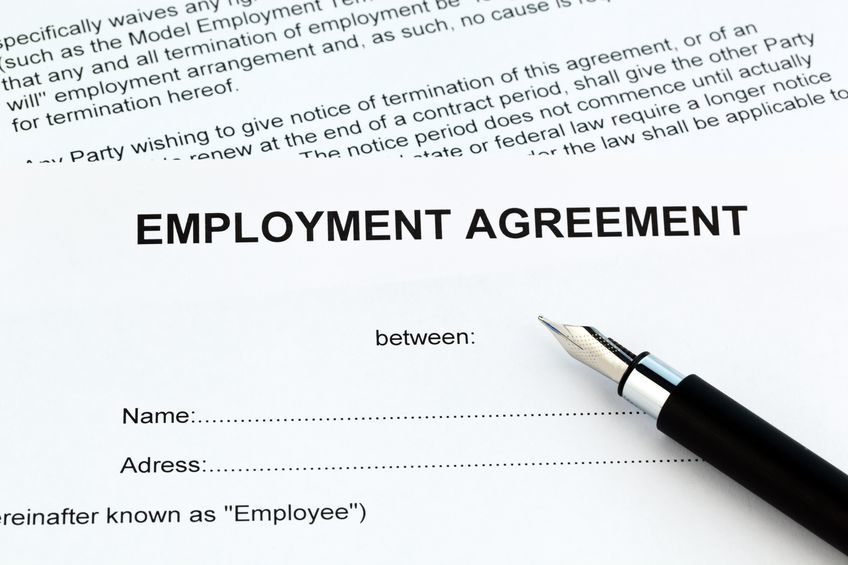Stay in the know
Subscribe to the Employment Blog and we'll send you an email each time something new is posted.
Subscribe to the Employment Blog and we'll send you an email each time something new is posted.
Blogs
Employment Blog
Disproving “Cause” in Equity and Executive Employment Agreements
On March 6, 2017, the Massachusetts Supreme Judicial Court decided Balles v. Babcock Power Inc., a case involving the meaning and application of “for cause” termination language in stockholder and executive employment agreements. In Balles, the Court (Lenk, J.) provides guidance both to attorneys drafting and negotiating such agreements, and to those challenging and defending such terminations.
Background
It was undisputed that Babcock Power Inc. (Babcock) terminated executive Eric N. Balles (Balles) after learning of his ongoing affair with a subordinate. If the termination was “for cause” as defined in the stockholders agreement, Babcock could re-purchase Balles stock for the nominal price of $0.001 per share and need not pay Balles any severance under the employment agreement. Babcock terminated “for cause” and Balles filed suit for declaratory judgment and breach of contract.
In the jury-waived portion of the trial,[1] the Superior Court (Wilkins, J.) found for Babcock on its breach of fiduciary duty claim and, on that basis, the Superior Court assessed against Balles an equitable forfeiture of past salary (that which was paid him during the period of his disloyalty) and denied him severance due to his material breach of the employment agreement.
On the other hand, however, the Superior Court found for Balles on the issue of “cause” under the stockholder agreement, and ordered return of his stock and payment of all dividends. Babcock appealed and the Supreme Judicial Court granted direct appellate review.
Guidance from the Court
The Court provided guidance in several areas: (1) the standard of judicial review of a company’s determination of “cause”; (2) the meaning of “fraud”; (3) the meaning of “gross insubordination”; (4) when an employer may ignore a contractually provided opportunity to correct (cure), and what constitutes correction in a circumstance such as this; and (5) the application of fiduciary duty defenses to stockholders agreement claims.
First, parties to a contract may, within limits, agree to a standard of judicial review that is deferential to one party. However, merely reciting that that the decision regarding “cause” “may only be made by the [company]” does not evidence such agreement; nor is such language ambiguous. In other words, if the parties to a contract want to provide an enforceable deferential standard of judicial review, they would be wise to do so explicitly.
Second, regarding “fraud” as a grounds for “cause”, the common law definition applies, presumably unless otherwise defined by the parties, and requires, among other things, both fraudulent intent and actual harm. Here, the two allegations of fraud did not meet the common-law definition. The mistakenly submitted false reimbursement request neither was submitted with the requisite intent nor was Babcock harmed. Likewise, Balles’ advocacy on behalf of his paramour without disclosing their personal relationship was done without the requisite intent and did not cause harm to company because, the Superior Court held, the paramour fully earned her salary and benefits by “her obvious verbal and managerial skills, intelligence, maturity, and motivation….”
Third, regarding “gross insubordination” as a ground for “cause”, merely failing to abide by company policies does not rise to the level of gross insubordination. Rather, again where the phrase is not defined in the agreement, the Court looked to the common law and held that “gross” insubordination, in contrast to insubordination, “is generally defined as willful disregard of a direct order.” Where, as here, Balles never disobeyed a direct order, his conduct did not constitute gross insubordination.
Fourth, where the contract provides for an opportunity to correct one’s conduct, Babcock could not ignore this on the “narrow” theory of futility, i.e., that correction would be impossible because the harm was already done. The Court pointed out that by asserting that correction requires undoing the breach, rather than remedying its effects, Babcock was reading the correction provision out of the agreement. Furthermore, the Court pointed out that correction was, indeed, possible here by, e.g., financial penalty, such as that imposed by the Superior Court, and even termination if termination was required to protect company culture – but to insist that such termination be for “cause” would, again, make the correction provision “for naught.”
Fifth, unlike under the employment agreement, “the rights of stockholders arising under contract, as here, are governed solely by contract.” Thus, Balles was entitled to his rights under the stockholder agreement irrespective of breaches of fiduciary duties.
In light of Balles, executives are reminded to discuss their stockholder and employment agreements with their executive advocacy attorney to ensure that they understand the “for cause” termination language of those agreements. Learn more about Sherin and Lodgen’s employment department and executive advocacy work here.
[1] The bulk of Babcock’s counter-claims were tried to a jury, and the jury found for Balles.




